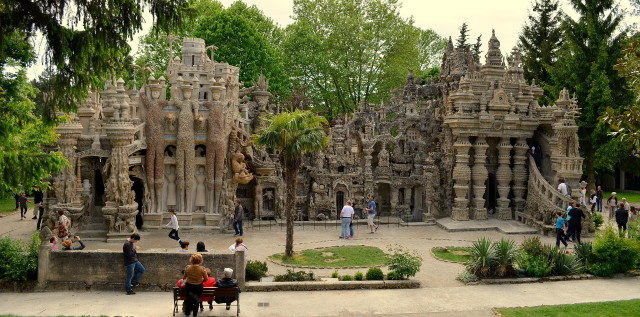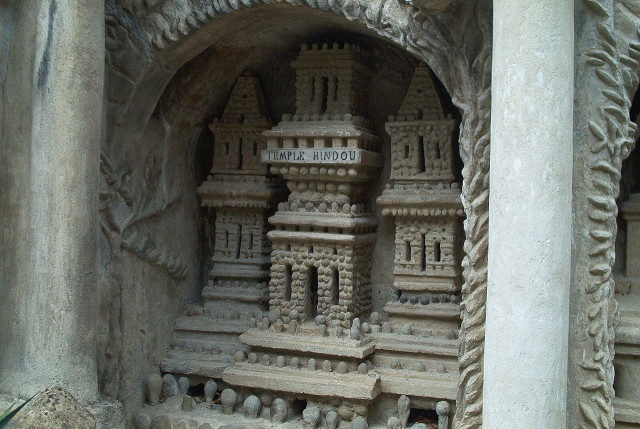One day, a man tripped over an unusually shaped stone and decided to build a dream palace. During the next 30 years of his life, he spent building Le Palais Idéal in Hauterives. The story of a French mail carrier, Ferdinand Cheval, speaks about a man who built a palace that is regarded as a remarkable specimen of original Naïve Art architecture.
Cheval was born in Charmes-sur-l’Herbasse in 1836 and lived in Châteauneuf-de-Galaure. He left school when he was 13 to become a baker, but eventually became a letter carrier.


The story of the Ideal Palace began in 1879, when one day, while walking his mail route, Cheval was distracted one day by a strange-shaped stone that he tripped over. His account of the incident and the journey to the Ideal Palace begins here: “I was walking very fast when my foot hit something that sent me stumbling for a few meters. I wanted to know what caused me to trip. In a dream I had, I built a palace, a castle or caves; I don’t remember specifically, and I cannot express it well… I didn’t tell anyone about my dream for fear of being scoffed at, and besides, I felt a little ridiculous myself.
Then, all of a sudden, fifteen years later, when I had almost forgotten my dream, and I wasn’t thinking about it at all, my tripping incident reminded me of it. My foot struck a stone that almost made me fall. I wanted to know what it was… It was a rock of such a strange shape that I put it in my pocket to admire it later when my work was done.”


The day after, I went back to the same location. I found more stones, even more beautiful, I gathered as many together as I could and was overwhelmed by delight… The rocks were sandstone shaped by water and hardened by time. They have become as hard as pebbles. They are sculptured by nature, so strange and almost impossible for man to imitate; they represent any animal, any caricature. I was thinking to myself: ‘Since Nature was willing to do the sculpture, the least I can do is the masonry and the architecture.'”

For the next thirty-three years, Cheval had been picking up and collecting stones during his daily mail rounds and carried them home to build the Ideal Palace. The outer walls were first; it took twenty years to build them. In the beginning, he carried the stones home in his pockets, then switched to using a basket. In the end, he was using a wheelbarrow. Most of the time he worked at night, and the only light he had was an oil lamp. The stones were bonded together with a mixture of lime, mortar, and cement, hand-mixed by Cheval. The Stone Palace is an impressive mix of different styles inspired by Christianity and even Hinduism.
Just before his death, Cheval started getting recognition from famous artist like Pablo Picasso and André Breton. Anaïs Nin wrote an essay that commemorated the work of his Palace. “The Postman Cheval” is the title of a collage created by the German artist Max Ernst in 1932. The work is owned by the Peggy Guggenheim Collection, and it’s permanently displayed. A short film about Cheval’s palace called Le Palais idéal was made in 1958 by Ado Kyrou.



In 1969, France’s Minister of Culture, André Malraux, declared the Palais a national landmark and today it’s officially protected. In 1986 Cheval adorned a French postage stamp.
Read another story from us: Some the world’s most beautiful castles
The Ideal Palace is open to visitors every day except Christmas Day and New Year’s Day, and it is also closed from 15th to 31st January.
